Jefferson Township - Site of Bohemian National Cemetery
Written in 1910, and published in 1911, “The Township of Jefferson, Illinois”, by Alfred Bull, writes “In 1774, Jefferson Township was part of West Virginia. Four years later the whole of the Northwestern Territories, including Ohio, Indiana, Illinois and parts of Wisconsin and Michigan, were known as the County of Illinois in the State of Virginia; while the treaty of Greenville, Ohio, in 1795 formally ceded to the United States the Chicago river and vicinity as a specific tract, together with other immense territories.”
Map Below - “The Township of Jefferson, Illinois”, by Alfred Bull"
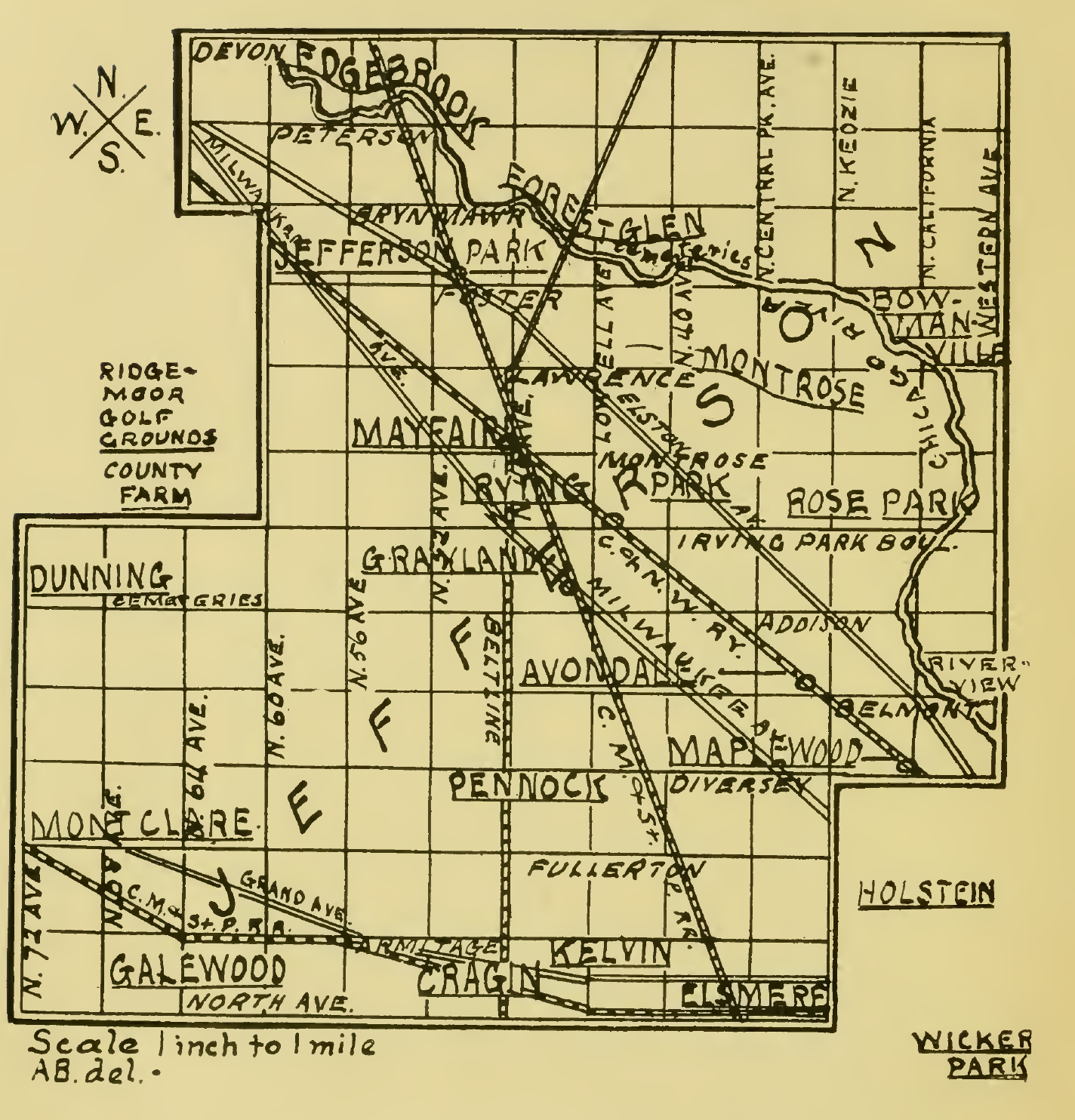
“John Kinzie Clark, generally known as “Indian” Clark, in 1825 had paid taxes of $2.50 on Cook County’s first personal assessment roll; and possibly from dislike of that experience, left Chicago in 1830 with a few personal effects behind a pair of mustangs to “squat” in Jefferson; where he “raised” a two room log shanty with a “shake” roof. His Indian neighbors called him Nonimon, or the “Prairie Wolf”. His mother, Elizabeth, had been for twelve years a prisoner among the Shawnees in Virginia, and was afterward known in Chicago as Mrs. Clybourn, dying but a few years ago.”
Alfred Bull goes on to describe that another of the earliest settlers was Elijah Wentworth, the landlord of Chicago’s Wolf Point Hotel, arriving in Jefferson Township and establishing a log cabin tavern where the current train station for the Chicago and Northwest Rail Road is now located.
Bull continues by describing that the early government land survey was not very accurate, so a new one in 1837 served as the one for land sales in the area. But: “Lands previously had been held by “right of possession” or squatter sovereignty, by the “mailed fist” or “shotgun”. The Canadian D.S. Dunning, whose name remains to us in the County Buildings and settlement at Dunning, bounded his original claim by a furrow. This was a custom help sacred by the early settlers, and useful also in fighting prairie fires. Many will remember his son, Russell O. Dunning born in 1848.”
The Digital Research Library of Illinois History Journal, May, 2019, posting by Neil Gale, Ph.D., (https://drloihjournal.blogspot.com/search/label/Lost%20Communities%20of%20Chicago) mentions that the State of Illinois formed the township of Jefferson in 1850. He goes on to describe that by 1855, there were 50 buildings in the area, and in 1872 Jefferson township was organized into Jefferson Village. “In 1889 the Village of Jefferson was annexed into the city of Chicago. Its borders were Devon Avenue on the north, Harlem Avenue on the west, Western Avenue to the east, and North Avenue to the south. It proved to be the Chicago's largest single annexation with the addition of 125 square miles of property and 225,000 additional people.”


Click on link below to view several really nice images of Jefferson.
From the website:
https://www.vamonde.com/posts/jefferson-park-history/347
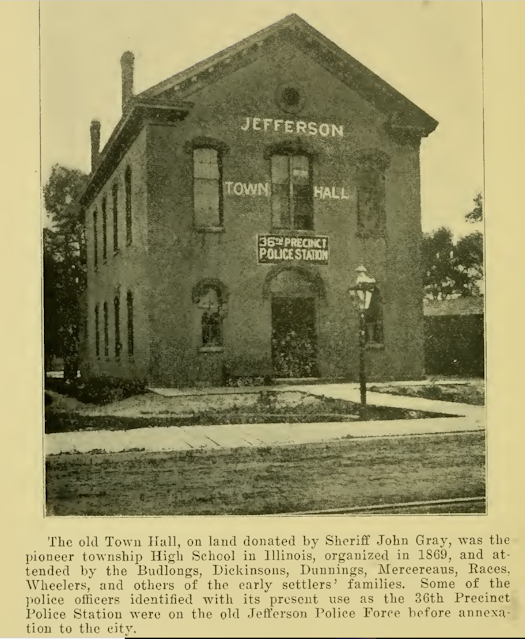
These five images are found in the book:
Written in 1910, and published in 1911, “The Township of Jefferson, Illinois”, by Alfred Bull.

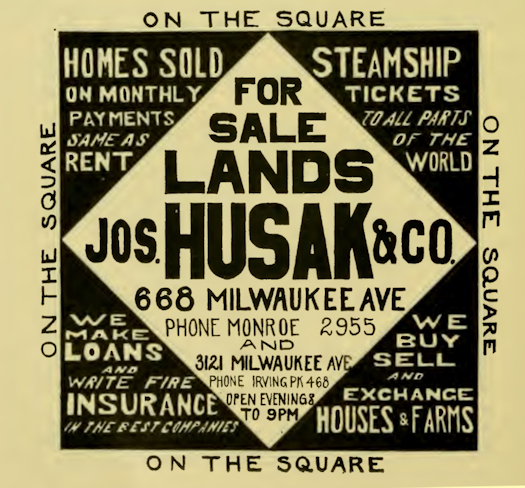
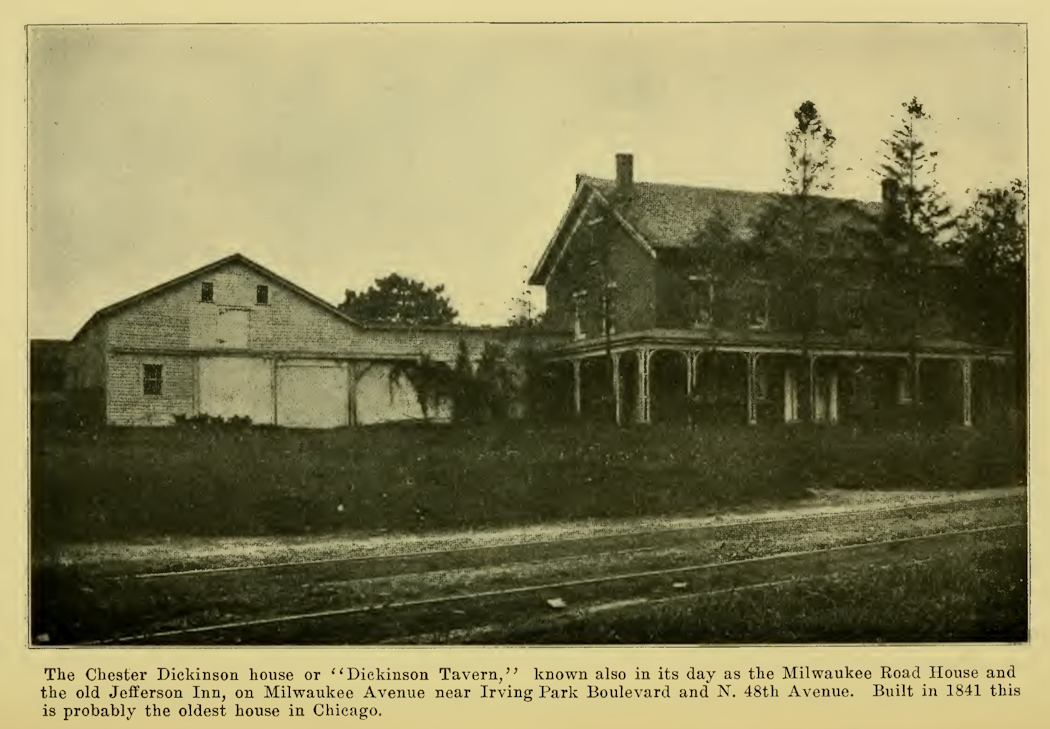

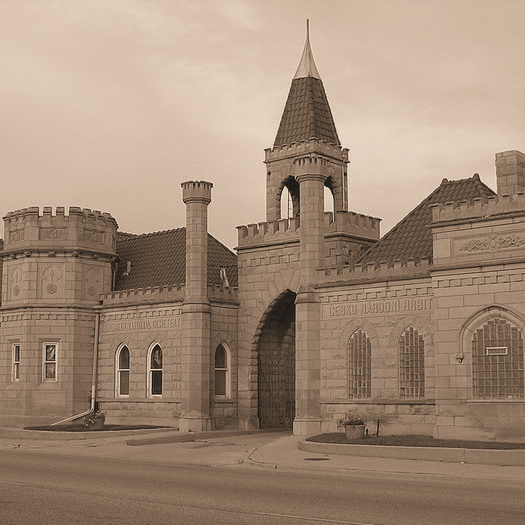
Bohemian National Cemetery was established in Jefferson Township.
The book, “Semi Centennial Jubilee of the Bohemian National Cemetery Association” (by J. J. Jelinek, English translation by Dr. J. E. S. Vohan) has a summary of its beginning.
According to the book, the refusal of Catholic priests to allow some burials in the Catholic cemeteries, the concept of a new cemetery took root. “The initiative was taken by Mr. Frank Zdrubek, then editor of the Bohemian daily Svornost, who help public lectures under the auspices of the Bohemian Free Thinkers Society at the hall of the Sokol Gymnastics Association….”
Summary from Semi Centennial Jubilee of the Bohemian National Cemetery Association.
On January 21, 1877, a committee of three was elected to ask all Bohemian Societies of Chicago to participate in a new cemetery venture. On February 12, 1877, eighty societies were represented at a meeting. Agreement was reached for all societies to work together to found a cemetery, but appeared to be unworkable. George H. Harlow, Illinois Secretary of State, signed on April 11, 1877, the charter and incorporation of the Bohemian National Cemetery Association, with trustees, Joseph Matusek, Joseph Novak and Stephen Sramek listed as the first trustees. After several locations were found unacceptable for a variety of reasons, Mr. Hintz found 40 acres east of Crawford, belonging to Martha and Frank Clybourn. The asking price was $7,500 with the condition that 10 additional acres, of adjacent land, could by purchased from August Ringel for $2500.
The land purchase was made, but Jefferson Township would not permit any burials within their limits, citing they had no cemetery of their own and did not wish to bury those from Chicago.
“The land was bought in May, and the lawyer for the Committee suggested that one or two dead bodies be buried in the cemetery, the sign Bohemian National Cemetery put up on the fence, and the legal steps of the township awaited. It was not easy to persuade anybody to consent to such a burial, because people feared that the township would compel them to remove the body from the grave to another cemetery. Finally, the Committee succeded in finding willing families to whom it guaranteed compensation for all expenses that might possible be incurred. On July 1, 1877 the first body, that of a child of Chas. Brada, was buried there, the fence was provided with the cemetery sign, and on August 7 the second burial took place, Anna, daughter of John Bican, was interred there.
On August 1, 1877 Martha and Frank Clyborn and August and Minnie Ringle signed deeds transferring ownership of lots 23, 24, 25, 28, and 26 to the Bohemian Cemetery Association.
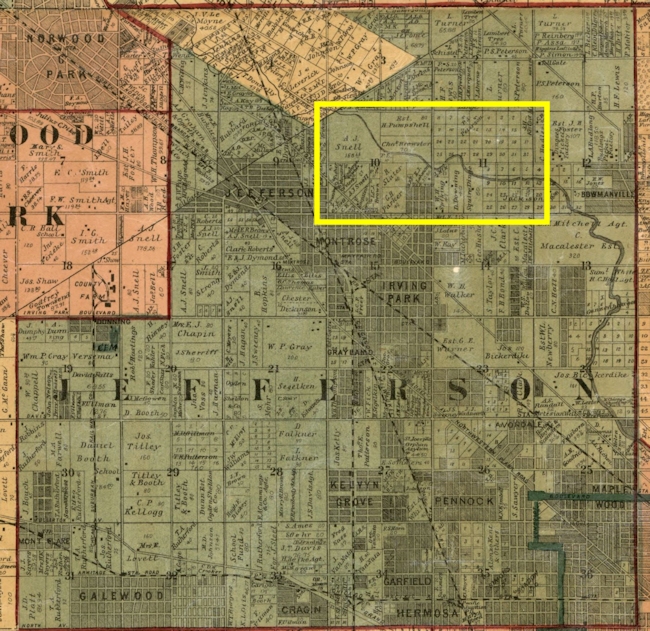
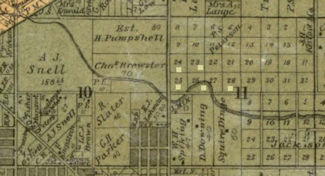
The township of Jefferson was waiting for its opportunity and brought a legal suit against the trustees. Hastily one more body was buried in the cemetery, and then all burials were stopped until the court could render a decision. The Cemetery Association was represented by attorneys Charles Leake and William Vocke. The case created a sensation, because there was no precedent and the decision had to become a directive rule for all future cases of this kind.
Chicago Daily Tribune – August 25, 1877 – “The Bohemian National Cemetery – The Village of Jefferson yesterday filed a bill against the Bohemian National Cemetery Association to prevent them from laying out their cemetery or burying bodies within the village limits. The complaint states that the Association some time ago presented the Board of Trustees of the village with a petition asking leave to establish a cemetery in the village, but no permission was ever given, as the requisite number of property owners did not sign the petition. The Association, however, bought forty acres fronting on Clybourn avenue, near the centre of the village, for a cemetery, and have already buried several bodies there. The manner in which the cemetery is kept is charged to be very offensive. In winter, all bodies are kept in a vault above ground until spring, when the coffins are opened, giving rise to a horrible stench, and kept open until certain rites are performed. The bodies are also buried so close tighter, and in such shallow trenches that there is a very offensive (can not read) exhaled. Picnics are also held in the cemeteries, liquor is sold, and drunkenness and noisy carousing ensure, so that, as complainant alleges, a cemetery of this Association would be a public nuisance, and cause property in the neighborhood to greatly deteriorate. It is therefore asked that the Association my be enjoined from locating a cemetery or burying bodies in the spot which has been selected by the Association on Clybourne avenue.”
The official opening of the cemetery was held on September 2, 1877. A parade of 4,000 marched to Northwestern train station, taking a 25-car train to the Irving Park train station. The parade reformed and marched to the cemetery. Frank Zdrubek was a speaker along with Captain Prokop Hudek who introduced German General Lieb, who also made a speech.
Chicago Daily Tribune – September 3, 1877 – “The Bohemian Cemetery. Its Dedication Yesterday. – The Bohemians of Chicago yesterday indulged in a grand demonstration, in the form of a trip to Irving Park, in the Town of Jefferson. A month or two ago a number of Bohemians purchased some fifty acres of ground at that place, intending to devote a portion of it to the formation of a cemetery. A large majority of the Bohemians domiciled in Chicago are Roman Catholic, but there is an influential minority, including nearly all the better educated and more intelligent, who hold liberal views in regard to religion, and this element determined to procure a place where they could bury their dead without asking leave of a priest or parson.
Readers of the Tribune will remember that the residents of Jefferson had raised some trouble about the creation of the new cemetery within the limits of that town, and the question as to whether it will be allowed is not yet finally settled. Believing the misrepresentations in regard to their character and proclivities had been made, the Bohemians determined to visit the town and show the citizens what manner of men and women they were.
A special train was chartered, and left the Canal Street depot of the Northwestern Railroad at about 9:45 a.m. It consisted of twenty-five coaches, all packed full, and nearly all the excursionists were of the weaker sex without whom a picnic would be an absolute failure. Every Bohemian society in the city was represented, and in the procession which marched from Taylor and Canal streets to the depot, there were not less than five bands of music. Mr. Prokop Hudek was Grand Marshall and was assisted by six prominent Bohemians.
The Societies Participating were:
The Bohemian Sharpshooters, The Cemetery Association, Odd Fellows Lodge, No. 630, Workingmen’s Benevolent Society, Turners’ Dramatic Club “Thalia”, S.. Club “Syra”, St. Wenceslau’s Catholic Benevolent Society, The Dramatic Club “T?L” five lodges of the Bohemian Solave Assocation, The Bohemian National Benevolent Society, The Benovlent Society “Vlastinil” The Sons of Liberty, Free Thinking Society, Literary Club “B…da”, National Benevolent Society “Slovan”, St. John’s Catholic Benevolent Society, and others.
Only one train having been provided, it was found impossible to accommodate more than about two thirds of the assembled crowd, and nearly 1,000 people were therefore unable to share in the day’s festivities. As it was, there were nearly 3,000 people on the grounds, which are situated fully a mile east of the Irving Park railroad depot. A quieter and better behaved body could not be found, and the proceedings of the day were marked by the greatest order and good humor. Several songs were sung by the “Lyra” Society, and the people spread themselves over the grounds, and made a picnic for themselves, forming into parties as suited them best. There was been on the grounds, but no drunkenness, games of an innocent character, and not a single rowdy or evidence of the presence of one. Prokop Hudek welcomed the gathering, and Frank Zdrubek, editor of a Bohemian paper published in the city, delivered the oration of the day. This related principally to matters interesting to the Bohemians themselves, and to the question of the establishment of a cemetery here. There were no set ceremonies or formalities whatever. Gen. Hermann Lieb made a few remarks, and the only thing which marred the part of the harmony of the day was an outbreak on the part of ex-policeman Martin Sack, who was unceremoniously bounced from the force as a reward for what he failed to do during the riots. This delectable specimen, took it upon himself to interrupt Gen. Lieb’s speech and was shoved out of the gate in ….. and two motions. The Bohemians repudiated him entirely, and were loud in their expressions of regret that he had ever been allowed to push himself in to their social gathering.”
On October 16 Judge Williams passed judgement which permitted burials in the cemetery by the Association and gave to the Township only the right of police inspection…..”
Chicago Daily Tribune – October 22, 1877 – “Jefferson Worsted in Its Encounter with the Bohemian Cemetery – About two months ago the Village of Jefferson filed a bill to prevent the Bohemian National Cemetery Association from laying out a cemetery within the village limits, charging that the manner in which the Bohemians buried their dead and controlled their cemeteries made them a nuisance, and also claiming the Association had never had any license given to lay out a cemetery within the town limits, as provided in the town ordinances. It nevertheless proceeded to buy a forty acre tract about a mile from the village for the purposes of a cemetery. The establishment of such an institution as this, the village authorities contended, would greatly depreciate property in the neighborhood, injure the health of the neighbors, and prove of great injury to the villagers. An injunction was therefore asked to prevent the proposed location of the cemetery near the village. The defendants filed an answer denying all the material charges of the bill, contending they had obtained the assent of thirty eight out of the fifty six property owners within a mile of the cemetery; that their customs are like those of all other civilized communities, and not likely to create a nuisance or cause trouble; and asking to have the bill dismissed.
The motion for injunction was argued some time ago, and Saturday Judge Williams delivered his decision. He said a cemetery was not a nuisance in itself, and whether one was a nuisance or not depended on circumstances. The Village of Jefferson included nearly a township of land, part sparsely populated, so that not every cemetery could possibly be a nuisance. That point had been decided by the Supreme Court. In order to give the declaration of the Board of Trustees of the village any force it must coincide with the facts. The simple statement that any cemetery established contrary to the ordinance was a nuisance did not make it so. A trial at law would have to be had to establish that fact.
The corporate authorities might remove an existing cemetery or prevent the establishment of one within certain parts of their territory. But the by-laws in attempting to prevent the establishment of any cemetery anywhere within the corporate limits were unreasonable in excluding from the limits of the village, even from its sparsely populated districts, all cemeteries in declaring all cemeteries established without consent nuisances, and in making it illegal for a resident to bury his own dead within it. If Jefferson could pass such a law, every other town could, and Chicago might have to go to other counties for burial places. The injunction asked is therefore refused.”
Additional Cemeteries would appear in or near Jefferson Township
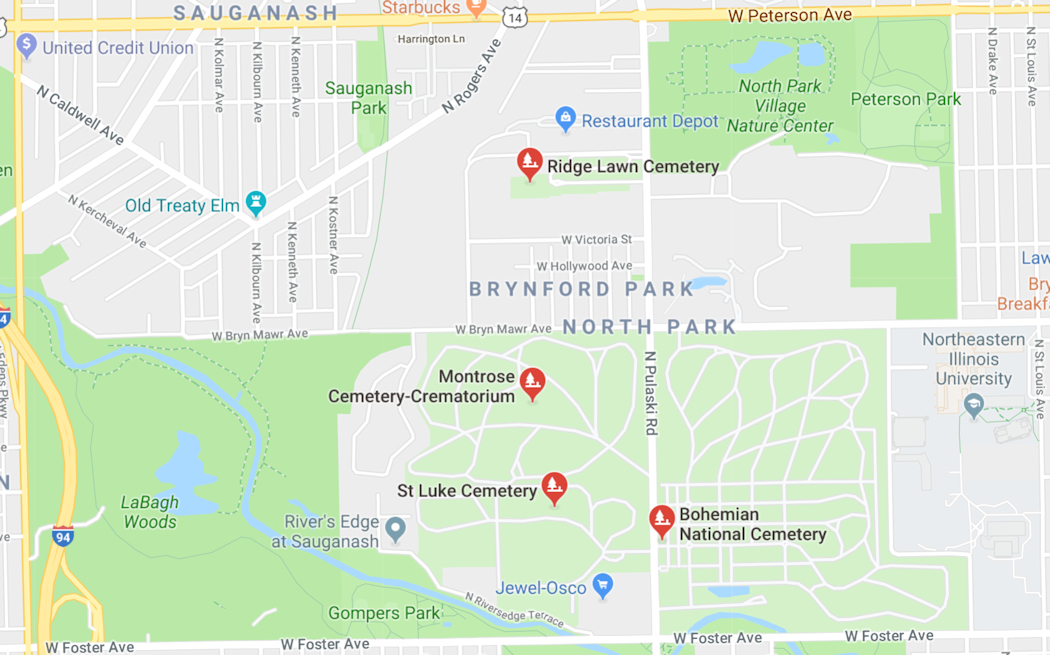
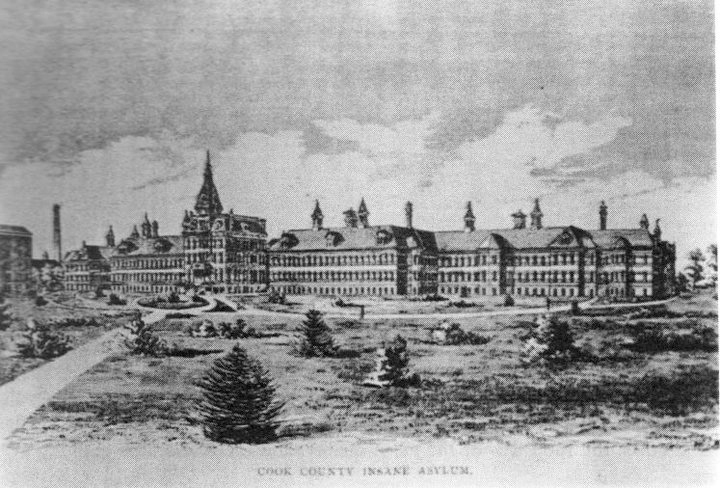
DUNNING/COOK COUNTY HOSPITAL FOR THE INSANE/POOR HOUSE
Estimated 38,000 buried within its grounds.
Website - Excellent summary of the rediscovery of the Dunning Site.
http://genealogytrails.com/ill/cook/jeffersontwp.html
DUNNING/COOK COUNTY HOSPITAL FOR THE INSANE/POOR HOUSE
In 1847, a Chicago physician built a private retreat for the insane just north of the city, and in 1854, when the county moved its almshouse to a site known as �Dunning� 12 miles northwest of the city, an asylum was among the buildings constructed. Authorities transferred this asylum, the Cook County Hospital for the Insane, to the care of the state of Illinois in 1912, and the name changed to Chicago State Hospital.
Cook County Cemetery at Dunning - 1854
An institutional cemetery was established on this site in 1854 on land that was a part of the 20-acre Cook County Poor Farm. Buried here are as many as 38,000 people including children, inmates of the poor house and insane asylum, 117 victims of the Chicago Fire of 1871, and Civil War veterans.
Often referred to as the County Ground, Cook County Farm Cemetery, Cemetery at Jefferson, or Poor House Cemetery, it was renamed Chicago State Hospital Cemetery in 1912.
The Northwest Chicago Historical Society has a very good Facebook page with information and images of the Jefferson area: https://www.facebook.com/Northwest-Chicago-Historical-Society-26423509 4135/
The Northwest Chicago Historical Society has a web site which may or may not yet be operational: http://nwchicagohistory.org/
